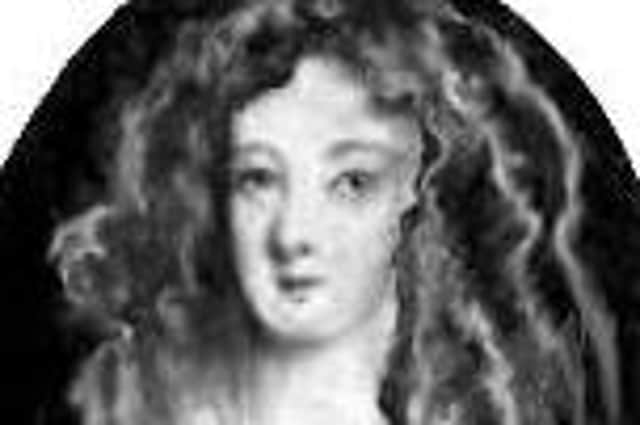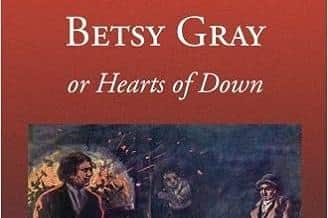Betsy Gray: Fact or fiction - the shadowy legend of an Ulster-Scots heroine


According to W G Lyttle in ‘Betsy Gray, or the Hearts of Down’, Betsy was ‘a striking young woman possessed of wondrous beauty, a beauty enriched and enhanced by a warm heart, an ardent temperament and lady-like accomplishments. Her beauty and goodness formed a theme for every tongue wherever she went, and many a wealthy suitor sought her hand in marriage’.
In the heady days of early June 1798 she joined her brother George and Willie Boal, her fiancé, to participate in the ‘Turn oot’, as the United Irish rebellion of 1798 is called in the Ulster-Scots communities of eastern Ulster.
Advertisement
Hide AdAdvertisement
Hide AdThe trio were present at the Battle of Ballynahinch on June 13 1798, Betsy mounted on a white horse, dressed in green and brandishing a sword. Escaping from Ballynahinch after battle, Betsy, her brother and lover were intercepted and killed by the yeomanry two miles outside the town.


W G Lyttle’s novel is a reckless mixture of fact and fiction which suggests an analogy with cinema. As Richard Holmes, the military historian rather than the literary biographer of the same name, has observed in a different context: ‘Hollywood is entertainment rather than history, though its tendency to use the past as the vehicle for story telling blurs fact and fiction so that the latter assumes, however unintentionally, the authority of the former’.
W G Lyttle’s story contains real historical figures such as the Rev William Steel Dickson, the Rev Thomas Ledlie Birch and Archibald Warwick. The book also describes real events such as the hanging of William Orr (October 14 1797), the Battle of Saintfield (June 9 1798) and the Battle of Ballynahinch (June 13 1798).
Indeed, it is difficult to disentangle fact and fiction because Lyttle assembled a large number of personal anecdotes and reminiscences of 1798. He then added some detail from the documentary sources he read. It was never intended as a definitive history of the events of June 1798. Did Betsy Gray exist? If so, where did this Ulster-Scot icon come from?
Advertisement
Hide AdAdvertisement
Hide AdThe traditional answer to the latter question is Six Road Ends at Gransha in north Down. Mary Ann McCracken, sister of Henry Joy McCracken, states that she came from Killinchy and Mary Ann McCracken, in the late A T Q Stewart’s estimation, is usually a reliable witness. A third claim is advanced for Tullyniskey, near Waringsford.
With respect to the former, she is, at best, a shadowy figure. In ‘Henry II’ (London, 1973) W L Warren memorably described Eleanor of Aquitaine, Henry II’s wife, as ‘a figure of legend and romance, but not of history.’
The same may be said with even greater force of Betsy Gray. She may well have existed but she may not have played the role ascribed to her. However, we are also obliged to note that the basic facts of Lyttle’s story were were not challenged by local people at the time.
A quarter of a century ago the historian A T Q Stewart contributed a delightful essay entitled ‘The Ghost of Betsy Gray’ to a volume published to mark the bicentenary of the 1798 rebellion in Co Down.
Advertisement
Hide AdAdvertisement
Hide AdThe essay opens with Dr Stewart recalling family Christmases at the home of an uncle in the 1930s. The uncle, married to his mother’s sister, was a Belfast businessman and veteran of the Battle of the Somme. At some point during the course of the day the uncle would take down an old volume from his shelves and declaim in mock-heroic tones ‘Betsy Gray, or the Hearts of Down!’
Stewart observes: ‘Many Christmases would pass before I pondered the incongruity of this yoking of Unionism and the United Irishmen, the Battle of the Somme and the Battle of Ballynahinch’. Why did this book find favour with his uncle? Two reasons suggested themselves: his uncle hailed from Killinchy and some of his ancestors had been out in 1798. Clearly, geography, ancestry and local pride play a major part.
This pride is very evident in J J Shaw’s observations written in 1888: ‘You are not, nor am I, ashamed of the fact that our ancestors were United Irishmen. We do not fear to speak of ’98. Had we lived in ’98 we should probably have been rebels ourselves, just as our rebellious forefathers, were they now alive, would be contented and loyal subjects of the empire.’
(An academic, who held chairs at Magee and TCD, and a lawyer whose career culminated in his appointment as Recorder of Belfast in 1910, Shaw was a Liberal in politics who became a Liberal Unionist following Gladstone’s conversion to Home Rule. He was born into a well-known Ards family. His father, John Maxwell Shaw of Kircubbin, was ‘a gentleman held in the highest esteem by all who knew him’.)
Advertisement
Hide AdAdvertisement
Hide AdIn 1968 Aiken McClelland, who was the librarian and archivist at the Ulster Folk and Transport Museum at the time, wrote: ‘For many years after its first publication, this was a standard book in almost every Co Down home, and though a vast number of books has been written about the rebellion of 1798, many have gleaned their acknowledge of the insurrection solely from Betsy Gray.
‘This may be regrettable from a purely historical viewpoint, but the average reader cares little about the complex political and economic factors which underlay the insurrection. He is content to read with pride how his poorly armed ancestors defeated the English troops at Saintfield, and to thrill with horror at the murder of poor, defenceless Betsy Gray.’
In A T Q Stewart’s estimation, that was ‘the matter in a nutshell’.